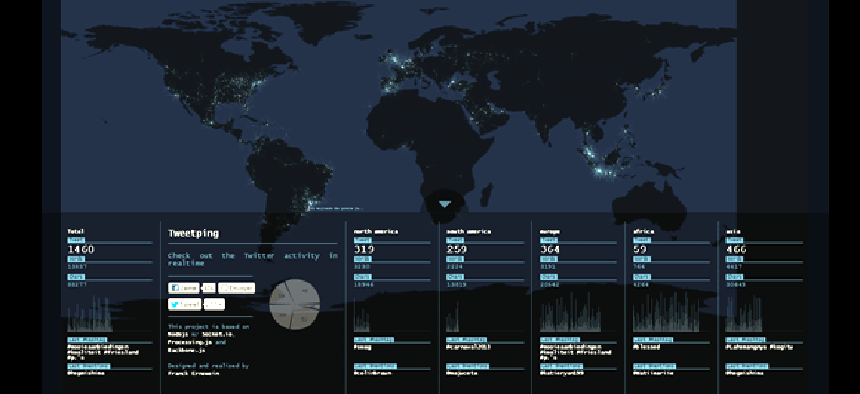Tweetping offers a real-time look at tweets around the world

If you want to know why agencies are increasingly interested in monitoring social media, this Web app helps put it in perspective.
Social media is becoming a useful tool for government, both for public outreach and accessibility and as a way of gaining actionable intelligence. Police are using Twitter and Facebook to track gang activity, health care agencies use social media to track the flu and the Office of Naval Research is developing a tool that applies those disease-tracking techniques to monitor public sentiment for signs of uprisings.
If you want a good illustration of why monitoring social media has become so important, Tweetping offers an example that is both sociologically enlightening and aesthetically beautiful.
Innovative Web developer Franck Ernewein created Tweetping as a Chrome-based JavaScript Web application. It opens with a map of the world with the land masses in black, but only for a fraction of a second. That’s when the points of light start showing up around the world, each representing a tweet from a certain location. The page also continually flashes hashtags and mentions those being used, if you can manage to read them at high speed.
They continue to appear, at about 50 to 100 dots per second, merging with nearby dots to make larger, brighter dots. At the time I was watching it, after only 100,000 total worldwide tweets, the eastern half of the U.S., the southeastern part of Canada and central Mexico combined into one bright blob with some slightly dimmer places. Western Europe was the same way. And somewhere in that time a single dot showed up in Antarctica.
The statistics at the bottom show totals for the world, North America, South America, Europe, Africa and Asia, though I couldn’t tell you which total the one or two tweets from Antarctica was lumped into. Of course, those would only be tweets from people who have their location setting in Twitter turned on, so there is no good way to tell how large a percentage of Twitter users this represents.
But after looking at the art-in-motion that is the Tweetping display, that won’t matter much — it’s pretty humbling as it is with just this fraction. And it’s easy to see why agencies want to keep up with all that activity.





